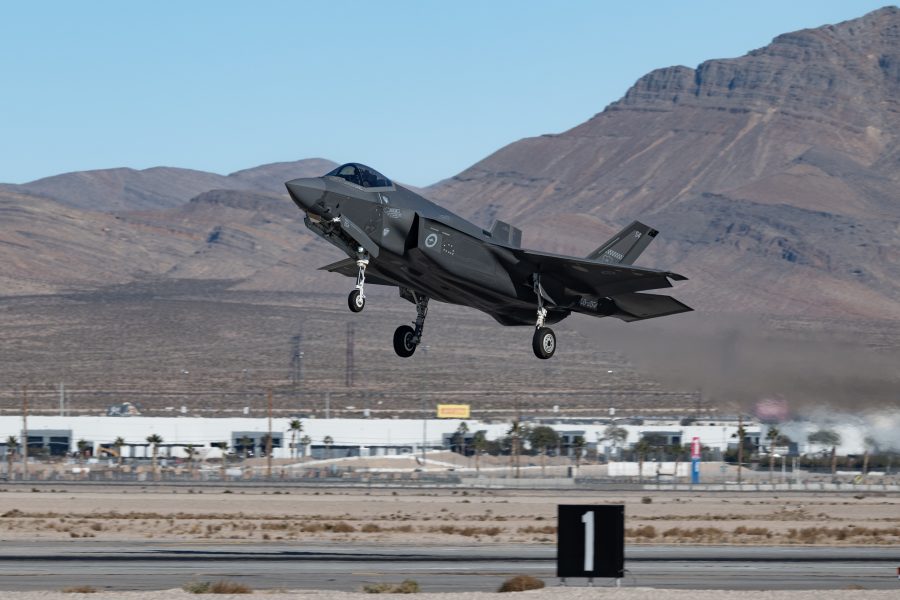Secretary of Defense Lloyd J. Austin III and his Australian and Japanese counterparts met May 2 and agreed to increase the frequency and complexity of trilateral exercises, including F-35 training in all three countries amid growing tensions with China.
“We talked about the security landscape across the Indo-Pacific and discussed new initiatives to make the region more stable and secure,” Austin said at a press conference after the meetings at Camp Smith in Hawaii.
In a joint statement, Austin, Australian defense minister Richard Marles, and Japanese defense minister Minoru Kihara said they would conduct trilateral F-35 exercises such as the upcoming Cope North in the U.S., Bushido Guardian in Japan, and Pitch Black in Australia, from 2025 to 2026.
This comes after the first reciprocal deployments of Japan and Australia’s F-35As, with both nations sending fighters to each others’ territories last year.
Australia has purchased 72 Lockheed F-35As to establish three squadrons within its Royal Australian Air Force, with plans to acquire up to 100 jets. Japan intends to procure 105 F-35As and up to 42 F-35Bs, with their order placed in 2022.
Elsewhere in the statement, the three leaders agreed to collaborate on research and development for new technologies—including collaborative combat aircraft (CCA), the wingmen drones that the U.S. Air Force in particular plans to invest billions in over the next several years.
The trio also agreed to conduct the first combined live-fire air-and-missile exercise in 2027, along with developing a joint air defense architecture to counter growing air and missile threats in the Indo-Pacific region
Philippines Secretary of National Defense Gilberto Teodoro Jr, joined the meeting later that day, marking the second-ever joint gathering of the four countries’ defense chiefs.
“We want to pursue coordinated security assistance to the Philippines that will boost interoperability and help the Philippines achieve its defense modernization goals,” Austin said. “We’re looking to conduct more maritime exercises and activities among our four countries.”
The four nations held their first joint maritime cooperative activities (MCA) last month in the South China Sea, featuring naval, maritime, and air units. China has claimed sovereignty over much of the waters in the region, including areas claimed by Vietnam, the Philippines, Malaysia, Brunei, and Indonesia, escalating tensions in the heavily-trafficked area. The Philippine coast guard said two of their patrol vessels were struck by Chinese coast guard using water cannons on April 30, adding to the growing number of hostile actions from Beijing.
The U.S. has also sent fighters and bombers in the Philippines’ Exclusive Economic Zone (EEZ) since 2018 for bilateral training. The Chinese military has previously accused the Philippines of collaborating with outside countries “to stir up trouble” in the region.
The four defense chiefs reaffirmed their opposition to any destabilizing actions by China to alter the status quo through force or coercion in the South and East China Seas, including unsafe encounters at sea and in the air, and the aggressive use of coast guard vessels. They underscored their commitment to maintaining a free, open, secure, and prosperous Indo-Pacific, and the peace and stability in the Taiwan Strait.
Last month, President Joe Biden has suggested plans for trilateral military exercises involving Japan and the U.K. Biden also met with Japanese Prime Minister Fumio Kishida and Philippine President Ferdinand Marcos Jr. in their “first of many” trilateral summits in April to address concerns over Beijing’s “dangerous and aggressive” behavior in the South China Sea.
